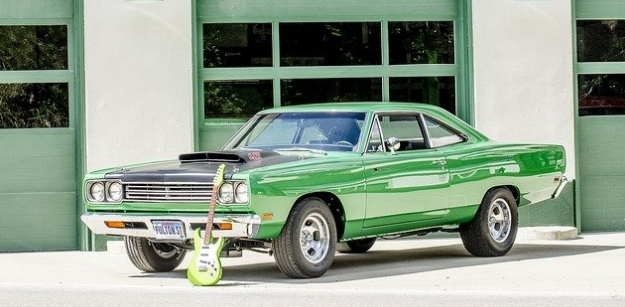Whether your car is new, secondhand or current, you want to keep it in top condition. Diligent car care will prolong the life, performance and value of your vehicle.
Due to the complex nature of most vehicles today, we rarely look under the bonnet of our cars, tending to leave everything to the service mechanics. However, having a general knowledge of car care will ensure you are informed about how to look after your vehicle.
As a vehicle owner it is in your best interests to be aware of potential wear and tear of components, what to look for, and what you can do yourself. This could save you money on unnecessary repairs or breakdowns and may help to prevent an accident.


Your car is a valuable asset, and to help you to keep it working and looking at its best, we have put together 8 Essential Car Maintenance Tips to ensure that you get the most from your car and keep it in peak condition.
1. Regular Servicing
A reliable, honest professional mechanic is vital to maintaining your car. Preferably one who specializes in the make of your vehicle. Regular services and repairs keep it functioning well, preventing deterioration of components before they become dangerous. A reliable mechanic gives you confidence that your car is in good hands. Regular services keep the logbook up to date and records the service history of your vehicle if/when, you sell your car. A good mechanic will keep informed about the state of your car’s engine and alert you of any items that need attention – before they become major issues leading to breakdowns.
2. Know the Owner’s Manual
Although you have a good trustworthy mechanic, there is more to car care than the services. To be really informed of what you can do yourself, read the owner’s manual. The owner’s manual s tells you about your vehicle, and what you can do to look after it.
New vehicles come with a comprehensive Owners’ Manual, however if your car doesn’t have one, it can be obtained from the vehicle manufacturer or downloaded from the internet.
Familiarizing yourself with the manual ensures that you aren’t caught unaware by unfamiliar flashing symbols on the dashboard when driving on the freeway. The manual explains the electrical symbols, and their meaning, so that when a flashing light appears on your dashboard you will know what it is, and what action is required. The manual also tells you what fuel to use and what pressure your tyres should be. The warning lights indicate whether the issue is one that you can fix, or requires a mechanic.
3. Stick with the Recommended Fuel
The octane rating for your vehicle is recommended for good reason. It may be tempting to use a higher-octane fuel to increase your car’s performance, however your vehicle is set to sustainably perform at its best when using fuel recommended by the manufacturer. Deviating from this can, unwittingly, be doing long term damage to your car , thus shortening its performance life.
4. Fluid Levels
Between services, keep an eye on fluids such as the radiator coolant to prevent overheating, or the wiper water level to ensure less wear on the wipers and to keep your windscreen clean. Warning lights on the dash will alert you that the fluids essential to the running of your vehicle are too low, e.g. the engine oil, transmission fluid or brake fluid. Get these checked when the warning light appears, or risk potentially ruin the engine because you have ignored them!
5. Check Your Tyres
Correct tyre pressure is vital to the efficient running, handling and safety of your vehicle. Regular pressure checks on tires will ensure that your car is handling well. Your Owner’s manual informs you what tyre pressure you should have. This is often indicated on the inside edge of your vehicle’s driver’s door also.
Bald tyres should be replaced as they are unroadworthy and dangerous. Worn and unbalanced tyres are a preventable safety hazard.
Rotate the tyres every 8000kms, or as recommended by the manufacturer. Rotating the tyres evens the wear and, along with regular wheel alignment and balancing, improves fuel economy and safety on the road.
6. Note Fuel Economy
Maintaining your car ensures that it is running at optimum efficiency. If your fuel consumption increases suddenly compared to its normal rate of operation, and your driving conditions haven’t changed, then your car may not be performing at its best. This could be a simple fix, such as the tyre pressure or could indicate a more serious engine problem. Check the odometer and trip reader regularly so that any changes are obvious.
7. Lights Indicators and Wipers
Checking the lights, indicators and wipers are easy tasks. Even if you cannot make the changes yourself, regular checks ensuring that your lights and indicators are functioning correctly means they can easily be rectified at your garage or mechanic’s workshop. If the wipers are creating smears or screeching across your windscreen it’s time to change them! These things are safety features and need attending to regularly to keep your car roadworthy.
8. Clean your Car
A clean car is not just for good looks. Regular cleaning inside and out will prolong the life and appearance of your vehicle and enhance its resale value.
Sun, grime, salt and bird and animal droppings all damage the paint surface, and metal of your car. Regular washing removes this and prevents damaging build-up. This includes window cleaning, to increase driving visibility and prolongs the life of the wipers.
Air fresheners cannot hide the smells of regular use by hungry children or pets! Dusting and vacuuming the interior of your car keeps it smelling fresh and prevents dirt, grime, food and animal hair from becoming embedded in the carpet and upholstery. Replace worn mats when needed for safety.



